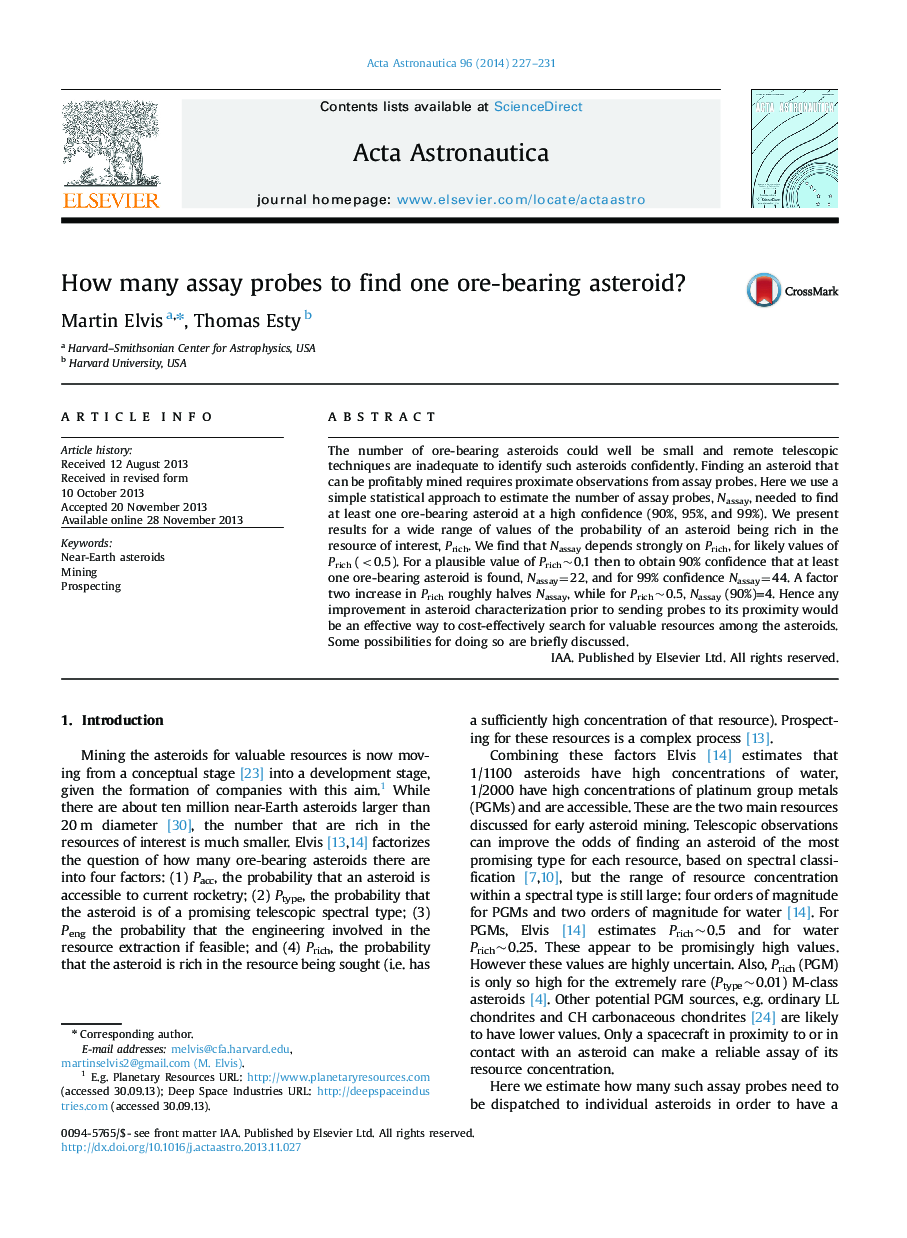| Article ID | Journal | Published Year | Pages | File Type |
|---|---|---|---|---|
| 1714820 | Acta Astronautica | 2014 | 5 Pages |
•If 1/10 asteroids are ore-bearing two dozen must be probed to find 1 at 90% confidence.•Even if 1/2 are ore-bearing four probes are needed, or 11 at 99% confidence.•This pushes down the allowed cost/probe.•Improving bulk telescopic characterization rapidly reduces the number of probes.
The number of ore-bearing asteroids could well be small and remote telescopic techniques are inadequate to identify such asteroids confidently. Finding an asteroid that can be profitably mined requires proximate observations from assay probes. Here we use a simple statistical approach to estimate the number of assay probes, Nassay, needed to find at least one ore-bearing asteroid at a high confidence (90%, 95%, and 99%). We present results for a wide range of values of the probability of an asteroid being rich in the resource of interest, Prich. We find that Nassay depends strongly on Prich, for likely values of Prich (<0.5). For a plausible value of Prich~0.1 then to obtain 90% confidence that at least one ore-bearing asteroid is found, Nassay=22, and for 99% confidence Nassay=44. A factor two increase in Prich roughly halves Nassay, while for Prich~0.5, Nassay (90%)=4. Hence any improvement in asteroid characterization prior to sending probes to its proximity would be an effective way to cost-effectively search for valuable resources among the asteroids. Some possibilities for doing so are briefly discussed.
